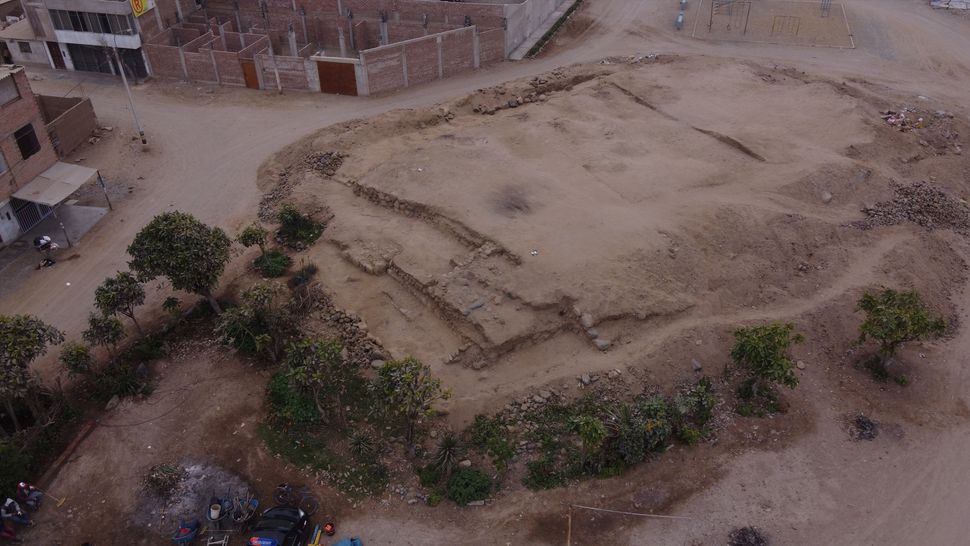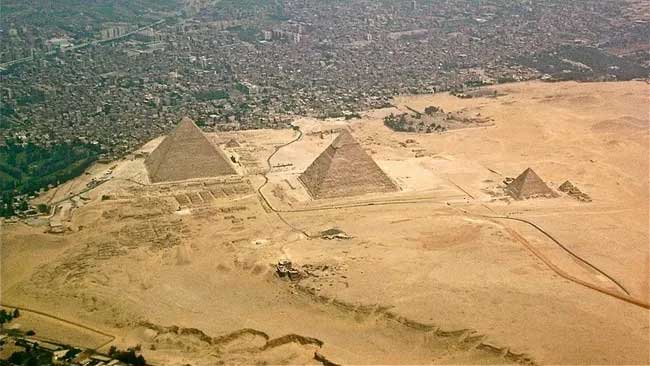Surprisingly, historical landmarks can survive in water. A 2,000-year-old temple from the “Indiana Jones civilization” has been found submerged off the coast of Italy. An ancient sunken bridge in Spain shows that people inhabited the Mediterranean island nearly 6,000 years ago. A torrential downpour hit an excavation site and uncovered a 233-million-year-old dinosaur. Archaeologists have discovered underwater images of several New and Late Kingdom pharaohs in the southern Egyptian province of Aswan. Archaeologists have found a centuries-old statue of a Greek god at the bottom of a Roman sewer.
2,000-Year-Old Temple from the ‘Indiana Jones Civilization’ Found Submerged Off Coast of Italy An ancient temple built by Arab immigrants of the Nabataean culture has finally been found off the coast of Italy near Naples. Archaeologists have discovered ancient altars and marble slabs with inscriptions submerged along the Italian coast near Naples. The finds are likely the remains of a 2,000-year-old temple built by immigrants from Nabataea, an ancient kingdom on the Arabian Peninsula whose rock-cut “Treasury” featured in Indiana Jones and the Last Crusade.
However, the complex temple was later filled with a mixture of concrete and broken pottery, possibly because foreign traders left the area, according to a study published Sept. 12 in the journal Antiquity.
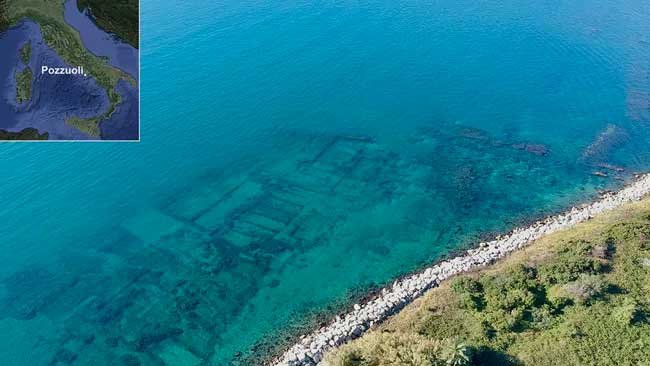
Submerged ancient warehouse district along the coast of Pozzuoli. M. Stefanile
The temple is located off the coast of Pozzuoli, a town in the volcanic Campi Flegrei, about 10 miles (16 kilometers) east of Naples. During Roman times, the town was known as Puteoli and was a major harbor where ships from all over the Roman world docked to bring in trade goods such as grain.
Volcanic activity over the centuries has significantly altered the coastline at Pozzuoli, submerging and preserving about 1.2 miles (2 km) of Roman-era warehouses and other buildings associated with the ancient port area. Artifacts recovered from the sea as early as the 18th century suggested there was a buried temple there, but no one knew exactly where.
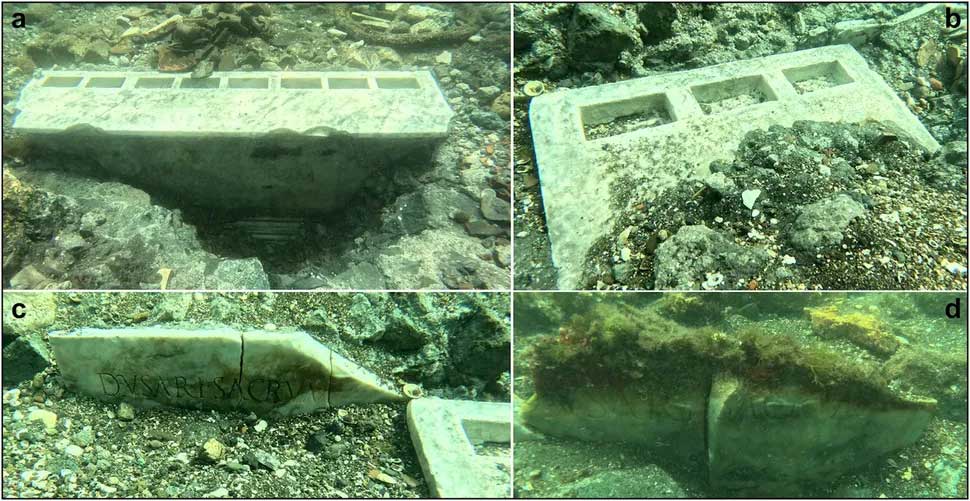
Examples of altars and inscribed marble slabs found off the coast of Pozzuoli, Italy. M. Stefanil
In 2023, researchers mapping the region’s seafloor discovered two submerged rooms with Roman-style walls. The walls, about 32 feet by 16 feet (10 meters by 5 meters), formed two large rooms. Two white marble altars leaned against the wall of one room. Both altars included several rectangular recesses that likely once held sacred stones. Each room also contained a marble slab with the Latin inscription “Dusari sacrum,” meaning “dedicated to Dushara,” the main god in the ancient Nabataean religion.
“It looks like we have a building dedicated to the Nabatean gods, but with Roman architecture and Latin inscriptions,” Stefanile said.
The Nabataean kingdom stretched from northern Arabia to the eastern Mediterranean. In the fourth to second centuries BCE, the Nabataeans controlled a growing trade network for luxury goods such as frankincense, gold, ivory, and perfume, amassing enormous wealth by the end of the first century CE. The great tomb often called the Treasury in the Nabataean capital of Petra was built around this time.
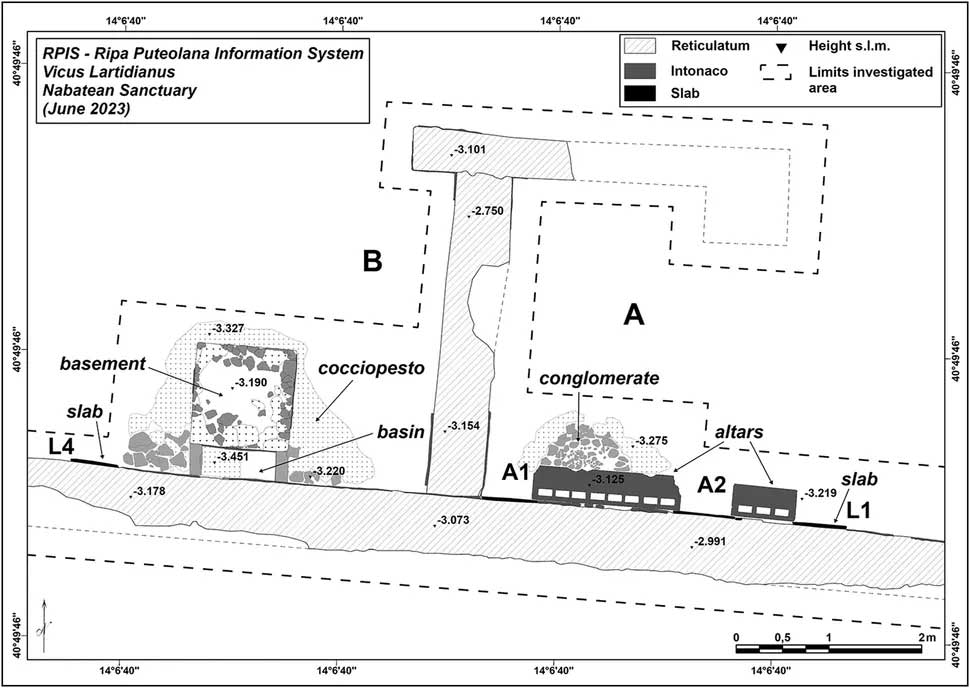
Map of the excavations of the Nabataean temple, compiled by archaeologists. M. Stefanil
The Nabataeans were in Puteoli as a community of traders. Puteoli was the second largest city and main port in Roman Italy at the time, and the Nabataeans were drawn there and brought their religious practices with them. It is widely believed that the Nabataeans benefited from the Roman expansion into the Middle East before the establishment of an Arabian province under Trajan, the Roman emperor who reigned from 98 to 117 CE. After Nabatea was annexed by the Roman Empire in 106 CE, the culture’s control over the internal caravan trade in Arabia collapsed. The destruction of the temple at Puteoli may reflect these turbulent times.
Stefanile and his team found that the temple had been deliberately filled with a mixture of concrete and broken pottery in the second century A.D. “It’s possible that after Trajan’s conquest of Arabia in 106 A.D., the Nabataeans were no longer able to trade freely in Puteoli and may have abandoned the harbor,” Stefanile said.
Ancient sunken bridge in Spain shows humans inhabited Mediterranean island nearly 6,000 years ago. After analysing a sunken bridge found in a Spanish cave, researchers have concluded that humans inhabited the area earlier than previously thought. A submerged human-built limestone bridge found inside a cave on a Spanish island is much older than previously thought, pushing back the date of human habitation, a new study has found.
Researchers discovered the limestone bridge in 2000 during a scuba diving expedition inside a flooded cave on Mallorca, a Mediterranean island off the east coast of mainland Spain. At the time, researchers determined that the 25-foot-long (7.6-meter) bridge, made of large limestone blocks stacked on top of each other, was built about 4,400 years ago, according to a study published Aug. 30 in the journal Communications Earth & Environment.
This dating was based on pottery fragments found inside the cave, but it is now known that this date was incorrect. In addition to the broken artifacts, the cave was littered with the bones of a now-extinct goat-footed antelope known as Myotragus balearicus, according to the university. However, exactly when humans first settled in the cave remains unclear.
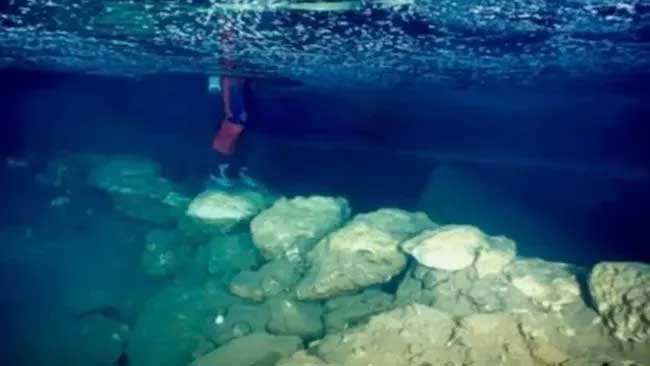
Underwater view of a limestone bridge located inside a flooded cave. Bogdan Onac
Despite being a large island, Majorca was one of the last islands in the Mediterranean to be inhabited. In contrast, Cyprus and Crete are thought to be the earliest islands in the area and were inhabited at least 9,000 years ago, according to a study in the journal Science.
To determine the bridge’s true construction date, the researchers studied a “distinctive light band” — similar to a “bathtub ring” — running along the top of the bridge, the study says. The color change shows changes in sea level, as well as the development of calcite deposits that formed on the bridge as the water rose.
By analyzing mineral deposits, also known as speleothems, the researchers determined that the bridge was built approximately 6,000 years ago, pushing back the time of human presence on the island by 1,600 years.
“This shows that the sea level remained there for a couple of hundred years, allowing the mark to form,” Onak said. “The timing of the bridge also shows that people were using this cave much earlier than previously thought, bridging the gap between eastern and western Mediterranean settlements.”
The researchers said further research was needed to determine why Majorca was settled later than other islands in the region, but it could have been due to the island’s lack of resources needed for survival, such as arable land.
A torrential downpour hit a dig site and uncovered a 233-million-year-old dinosaur. Paleontologists battled time and weather to protect the landmark monument.
Heavy rains in southern Brazil have uncovered the remains of a carnivorous dinosaur belonging to the herrerasaurid family that lived on Pangea during the Triassic period 233 million years ago. This makes the fossil the oldest dinosaur fossil in the world, although there are other unconfirmed specimens dating back 240 million years.
Palaeontologists are now racing against time to protect the specimen as heavy rains continue to erode soil and damage other fossils in the Quarta Colonia Geopark.
When it comes to dinosaurs, the most famous of these giant reptiles roamed the Earth during the Jurassic or Cretaceous periods — stegosaurs, tyrannosaurs, and velociraptors. But the history of dinosaurs goes back before those two geologic periods, and into the Triassic, a 50.5-million-year period that picked up the pieces after the Permian-Triassic extinction (also known as the Great Dying) and saw the beginning of the Age of Dinosaurs — only to be dwarfed by another extinction event known as the end-Triassic.

The Triassic period is also the era of Pangea, when all the continents formed one large supercontinent, and in a particular area of Pangea, about 233 million years ago, lived a member of the carnivorous dinosaur family Herrerasauridae. This bipedal, eight-foot-long Herrerasaurid (though other members of this group could be over 20 feet long) died at some point in what is now a state in southern Brazil that its modern inhabitants call “Rio Grande do Sul.”
While this sudden burst of mortality was bad news for the specimen, fortunately for paleontologists, its bones have been preserved for nearly a quarter of a billion years in a state that can be described as “almost completely preserved,” according to local news agency Agência Brasil.
“It’s one of the oldest in the world,” Rodrigo Müller of the Federal University of Santa Maria (UFSM) told Agência Brasil. “It’s already important because of the role it’s likely to play in helping us understand the origins of dinosaurs. Plus, it’s almost completely preserved. The material will provide a lot of anatomical information.”
The oldest confirmed dinosaur fossils are 231 million years old and include a collection of different species (including members of the Herrerasauridae). However, more controversial fossils date back 240 million years. The addition of this specimen could provide valuable context surrounding the first millions of years that dinosaurs roamed the Earth.
While the conditions for preserving this herrerasaurid in a dead state may have been fortunate for paleontologists, the context of its discovery in southern Brazil is less than ideal. The area was already well known for heavy rainfall, but as the climate warms, high-pressure systems off Brazil’s southern coast are lingering longer, meaning more and more rain. In early June, The New York Times reported that the region had received three months of rainfall in just two weeks, causing devastating floods and killing at least 182 people.
Archaeologists have discovered underwater images of several pharaohs of the New and Late Kingdoms in Aswan province in southern Egypt, the country’s Ministry of Tourism and Antiquities said. “A joint Egyptian-French archaeological mission… discovered inscriptions and small images of the pharaohs Amenhotep III, Thutmose IV, Psammetichus II and Apries,” the statement said.
According to the ministry, the discovery was made during the first underwater photo archaeological research in the Nile River in Aswan. It is noted that the purpose of the research was the rock paintings in the Nile near the Aswan Dam. It is reported that the archaeological mission used all modern equipment related to diving, archaeological research and underwater photography during the work. The ministry emphasized that the mission is currently working on creating 3D models of the images found in the Nile.
A team of archaeological divers have discovered fragments of ancient Egyptian artefacts that have been lying at the bottom of the Nile River since the area was flooded in the 1960s and 1970s.
During an underwater archaeological survey in Egypt’s main river, a team discovered ancient rock paintings that depicted various inscriptions and images of Egyptian pharaohs. The country’s Ministry of Tourism and Antiquities believes, according to a translated statement, that the discovery of these paintings “indicates the possibility of discovering new paintings and historical information.”
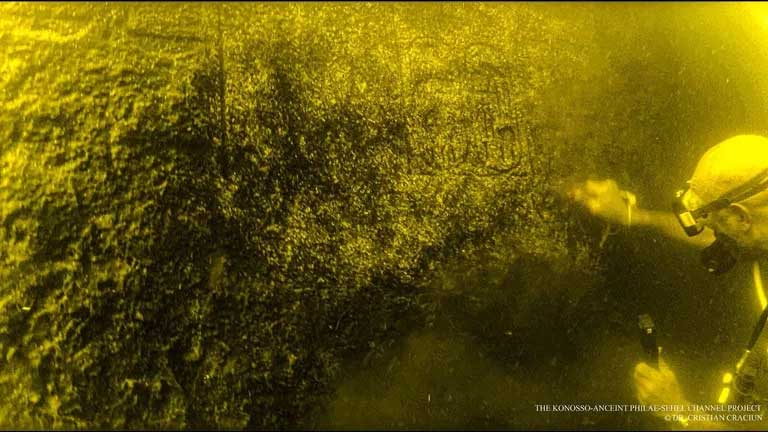
Archaeologists have discovered underwater images of pharaohs from the New and Late Kingdoms in Aswan Province in southern Egypt. Egypt’s Ministry of Tourism and Antiquities
This was the first mission to study the rock formations beneath the Nile between the Aswan Dam and the High Dam. When the High Dam was built in the 1960s, it flooded the area, devastating it and, in addition to displacing its population, washing away its rich history. Aswan, located along the Nile on Egypt’s southern border, was a major supplier of granite to the rest of the country for use in temples and pyramids. It had also been a key military outpost for centuries due to its geographic location. When the dam flooded during construction, UNESCO scrambled to find and salvage ancient artifacts, but time was short and the organization was unable to locate everything that had been washed away.
The research team, which was a joint effort between the Department of Sunken Archaeology of the Supreme Council of Antiquities of Egypt and the Paul-Valéry University of Montpellier, used archaeological scanning, photography, underwater video and photogrammetry, as well as archaeological drawings, to identify and document paintings, carvings and miniatures of kings Amenhotep III, Thutmose IV, Psammetichus II and Apries.
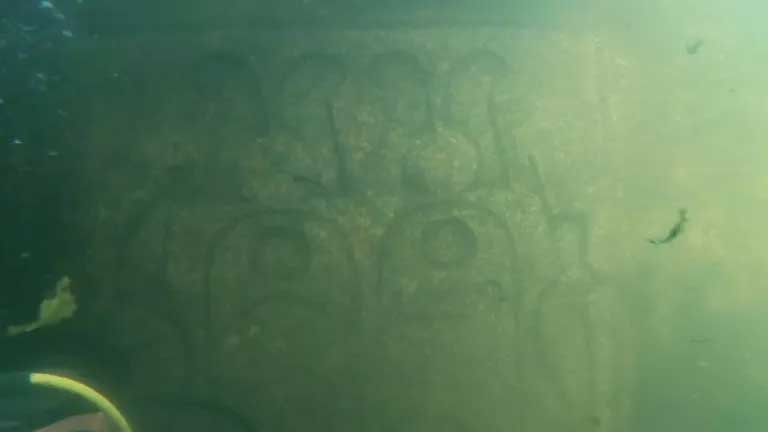
Archaeologists have discovered underwater images of pharaohs from the New and Late Kingdoms in Aswan Province in southern Egypt. Egypt’s Ministry of Tourism and Antiquities
Amenhotep III ruled for nearly four decades, according to the Rosicrucian Egyptian Museum, and died around 1352 BC. His son Thutmose IV then ruled until his death around 1390 BC. Psammetichus ruled from 595 to 589 BC, and Apries ruled from 589 to 570 BC. Amenhotep III’s temple is located near the site of the Aswan floods.
Supreme Council of Antiquities Secretary General Mohamed Ismail Khaled said in a statement that because the sculptures were in good condition, the team was able to fully document the texts that were associated with the carvings.
While the statement does not say what the inscriptions say, the team plans to create 3D models of the carvings they found for study. The discovery could open up entirely new insights into both the region and the possibility of additional underwater finds.
Archaeologists have found a centuries-old statue of a Greek god at the bottom of a Roman sewer and were stunned by its pristine condition. A marble statue of the Greek god Hermes has been discovered in an ancient Roman sewer in southwestern Bulgaria.
The 6ft 8in statue, a Roman copy of an ancient Greek original, is said to be in “very good condition”.
The inhabitants of the ancient city of Heraclea Sintica may have deliberately hidden the statue in the sewers to preserve their religion during the spread of Christianity in the region.
“I believe that the former inhabitants of the city buried it in the ground at this place after the great earthquake of the 4th century, in order to better preserve one of their old deities in the period when Christianity was already the official religion,” excavation director Lyudmil Vagalinski said in a post on the Archaeologia Bulgaria Facebook page.
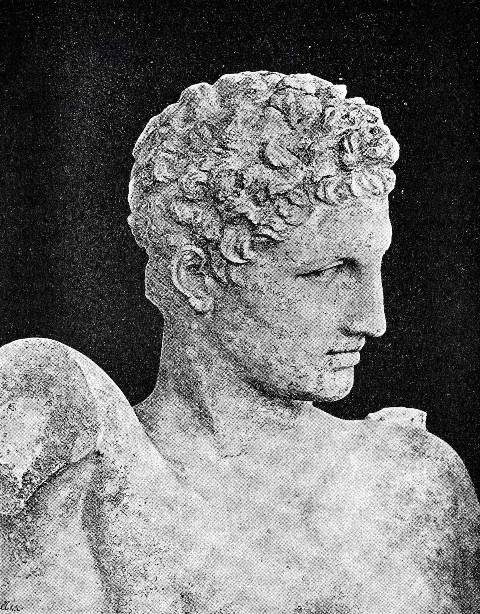
The mixture of mud and, of course, other organic matter apparently created conditions that allowed the statue to be perfectly preserved.
According to the New York Times, the archaeological team discovered the statue by accident. “It was amazing,” Wagalinski said. “Here was a whole statue.”
Archaeologists found the statue laid on its side and facing the wall of a sewer, indicating it was deliberately placed there before being covered with earth.
A tall piece of stone carved from a single block of marble was found during an excavation of the ancient city of Heraclea Sintica, which Macedonian King Philip II founded in the mid-300s BC, CNN reports. The southwestern Bulgarian city, located near the border with Greece, fell into disrepair after two earthquakes, one in 388 AD and another in 425 AD, Smithsonian Magazine reports, and was effectively abandoned around 500 AD, leaving behind its sewers.
The statue is almost identical to the statue of Hermes Atalanta from Greece





